Introduced in February 1945, the 2,000 hp E7A and E7B (cabless booster) were in production through April 1949. With 428 A and 82 B units produced, the E7 was the best-selling passenger diesel of the era. The largest purchasers were the Pennsylvania RR (60 units), New York Central (50), and Chicago, Burlington & Quincy (44).
The E7A was a transitional unit, combining the rectangular carbody windows and multiple exhaust stacks of the early E units with the shorter “bulldog” nose used on the E8/E9 and all F units. The unique spotting feature of the E7A is the row of vertical louvers behind the cab door. (The E7B has no substantial outward differences from the majority of earlier E boosters.)
Most railroads used their E7s in all types of passenger service, and a few were even used on intermodal and fast freights through the 1960s and early 1970s. However, Amtrak’s takeover of nationwide passenger service in 1971 didn’t include any E7s, so all of them were retired by the 1980s.
Construction
This E7 is an all-new model that combines a great-looking plastic body with a drive system typical of contemporary diesels and a QSI Quantum sound system. The mechanism is built on a cast zinc-alloy frame that provides plenty of weight for traction. A centrally mounted can motor with flywheel drives all six axles. The sound system, which includes two speakers and a DCC decoder, is mounted above the drive.
Uncovering the mechanism for maintenance is simple. Slide the snap-fit pilot forward to remove it, then spread the body sides slightly with your fingers and lift the body off the frame.
The electronics package combines the typical BLI features (analog DC and Digital Command Control operation, load regulation, and multiple programmable features) with a few new ones, including volume controls for horn, bell, diesel, air pump, cooling fans, air release, brake squeal, and coupler sounds. It is a truly comprehensive package, which delivers realistic sound and allows for infinite tuning. A sample of these sounds can be heard on the Web site at modelrailroader.com.
Purchasers who read the manual thoroughly will also note that BLI has included instructions for programming the dynamic brake sounds on an E8 or E9 model, despite the fact that BLI has not announced either model. Hmmmm.
Our A unit sample ran smoothly from the start, but our B unit surged noticeably. The solution proved to be a system reset, which required only that we remove the shell, remove a jumper plug, apply power with the plug removed, then reinstall the plug with the power off. From then on, the two units were a perfectly matched set, maintaining an even distance when running separately and pulling together beautifully when coupled. A BLI representative noted that the units will adjust to the characteristics of their power supply, and if a unit is used on multiple supplies the user may see a mismatch, like the surging we noted. A reset will restart the learning process and cure the problem.
Individually, the units pulled well, and together, they were extremely stout, even taking a heavy (24 cars, including some brass auto racks) freight up a 6 per cent grade without slipping. The models’ load regulation circuitry even kept the speed steady both up and down the ramp -impressive!
The wheelsets on our samples, which were from a very short pilot run, were all slightly narrow compared to the National Model Railroad Association’s standards gauge. We requested additional samples from the actual production run and found those to be correctly gauged.
The trucks are a snap-together assembly, and the wheelsets (a combination of a plastic central axle/gear and metal stub axles) are easy to regauge. Executive editor Andy Sperandeo reports having good luck keeping wheelsets in gauge on similar locomotives by applying a bit of Loctite (blue, not red) to the stub axles when reassembling the wheelsets.
As on earlier QSI-equipped locomotives, the minimum voltage in analog (DC) operation is higher than on a locomotive without a sound system to provide sufficient voltage for the sound system at idle. The user can adjust the voltage at which the locomotive moves and the voltage at which the locomotive reaches top speed, but changing these voltages to widen the control range will reduce the amount of load regulation. In either case, you’ll find that you’ll be using smaller throttle movements than usual in DC operation and confining those movements to the top half of your power supply’s voltage range.
And the sound? With two speakers in each unit and a full range of authentic prototype sounds, it was simply terrific. As we’ve heard with other QSI Quantum-equipped locomotives, full volume is impressively loud without distortion, and the combination of the rising and falling diesel load and revs, bell, and horn took me back to my days of watching Metra E units roaring out of Chicago during the rush hour.
A small push-button controller is sold separately to simplify sound control on DC. The horn sounds continuously as long as its button is pushed, while the bell circuit latches on or off each time the button is actuated.
Overall, BLI’s entry into the diesel market is a strong one. These E7s are good-looking, accurate diesels with powerful mechanisms and great sound, and I suspect that like their prototypes, they’ll find a home on many, many railroads.
Price: powered A, $225; B, 199.99;
unpowered B, $79.99
Manufacturer:
Broadway Limited Imports
P. O. Box 376
Ivy, VA 22945
www.broadway-limited.com
Description:
Plastic and metal ready-to-run passenger diesel locomotive
Road names:
- A units: Baltimore & Ohio; Chesapeake & Ohio; Chicago & North Western; Chicago, Burlington & Quincy; Great Northern; Milwaukee Road; New York Central; Southern Pacific; Southern Ry.; Union Pacific; and undecorated
- B units: New York Central; Southern Pacific; Southern Ry.; Union Pacific; and undecorated
Features
Bachmann E-Z Mate knuckle couplers mounted at the proper height
Directional constant lighting
Drawbar pull: 5.12 ounces (23 passenger or 71 freight cars on straight, level track)
Five-pole can motor with flywheel
Dual-mode automatic decoder for use on either DC or Digital Command Control
Dual-mode QSI sound system
Engine weight: 21 ounces
Lighted number boards
Minimum radius: 18″





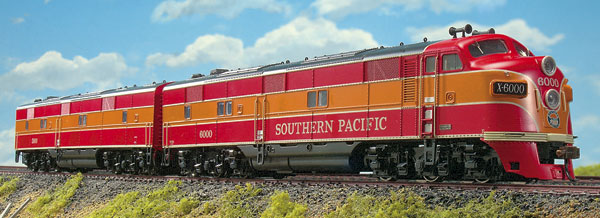
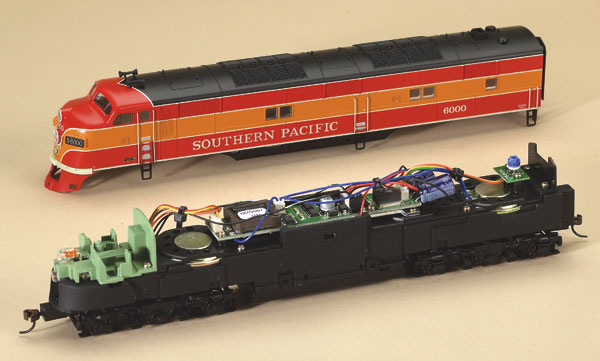
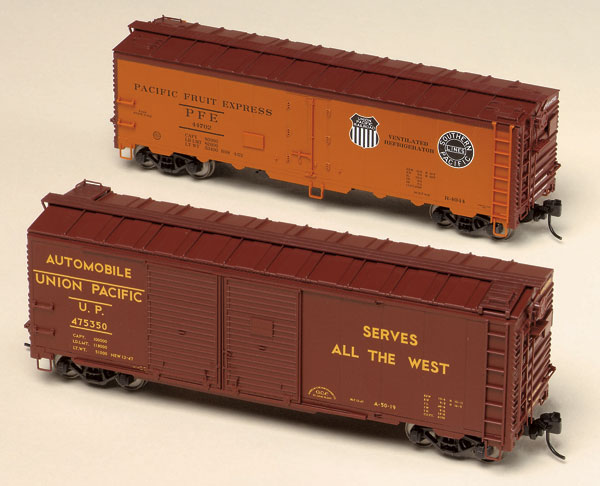

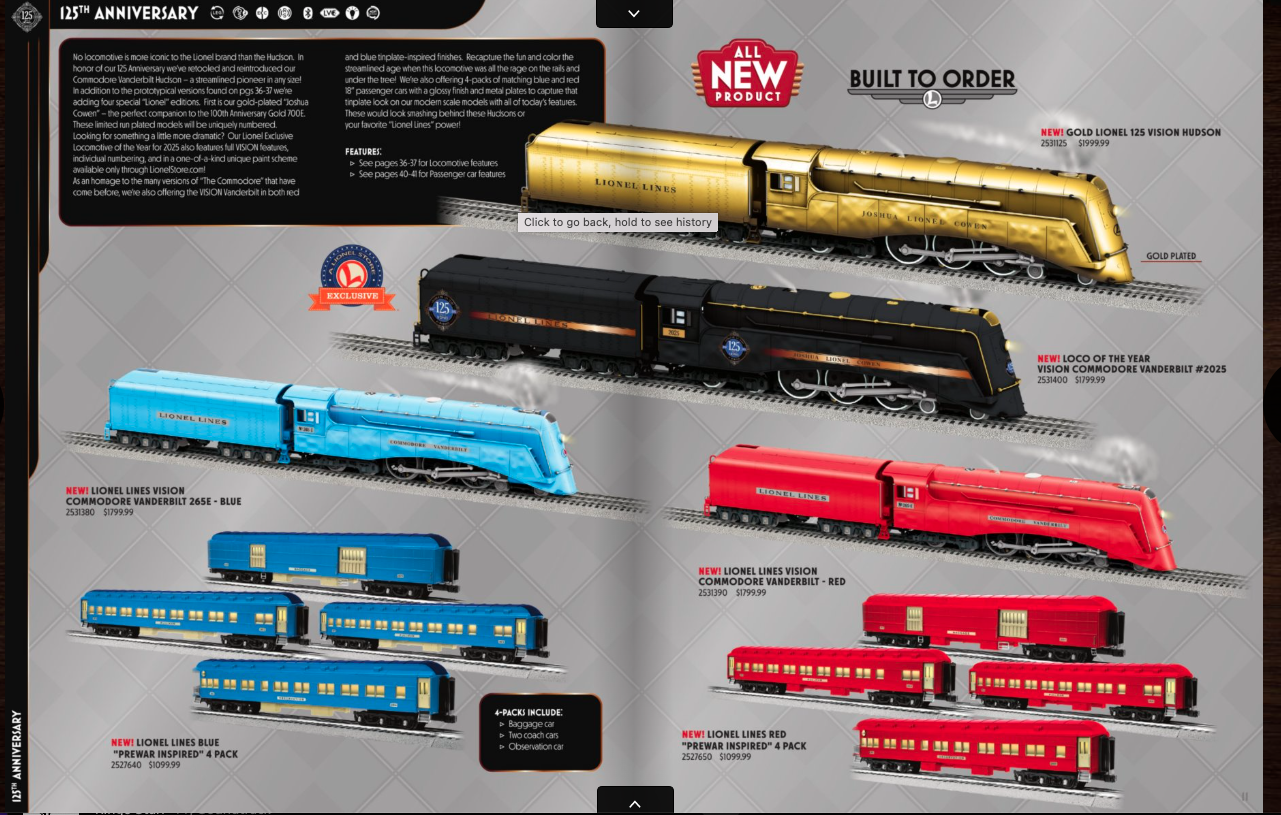
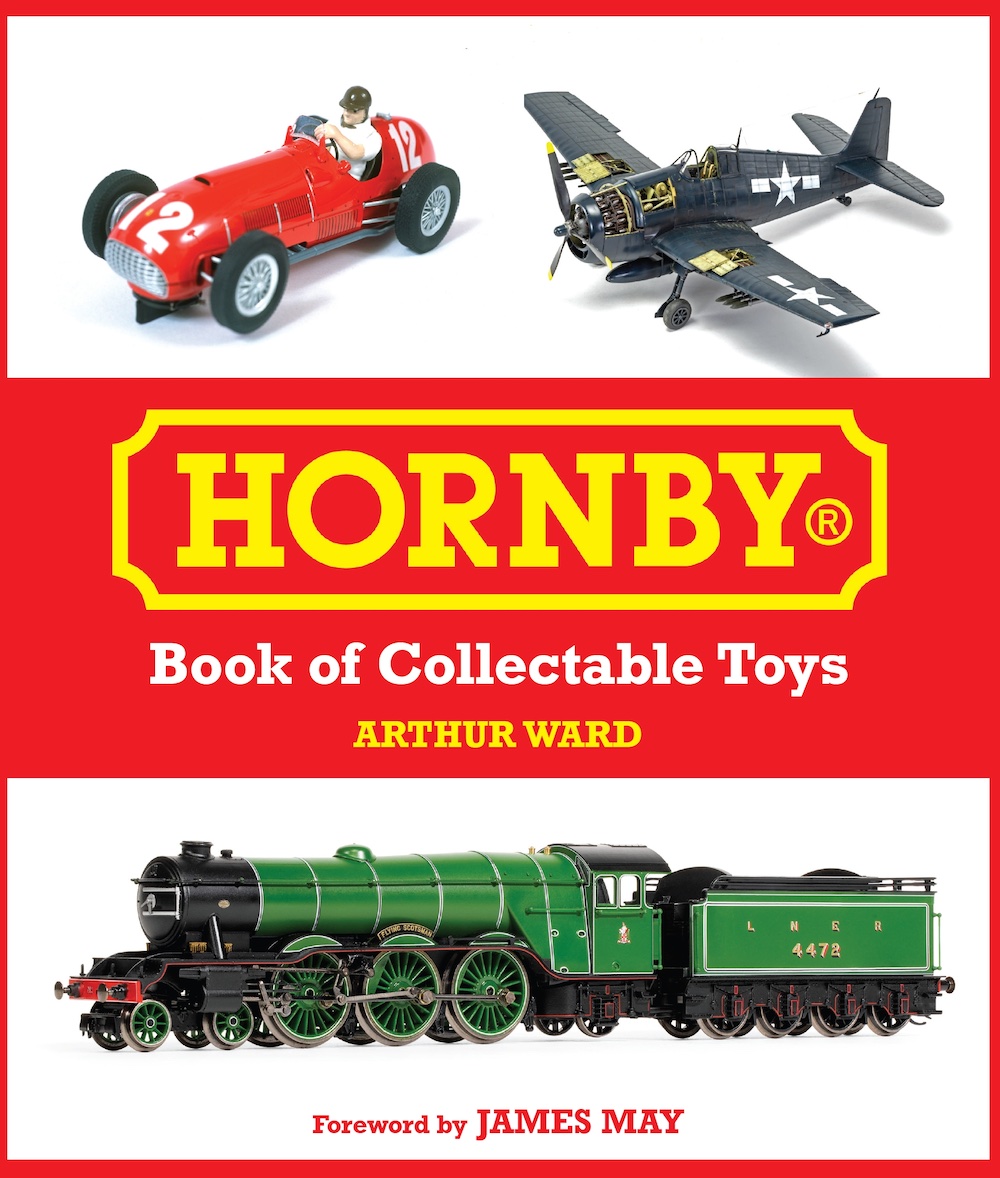

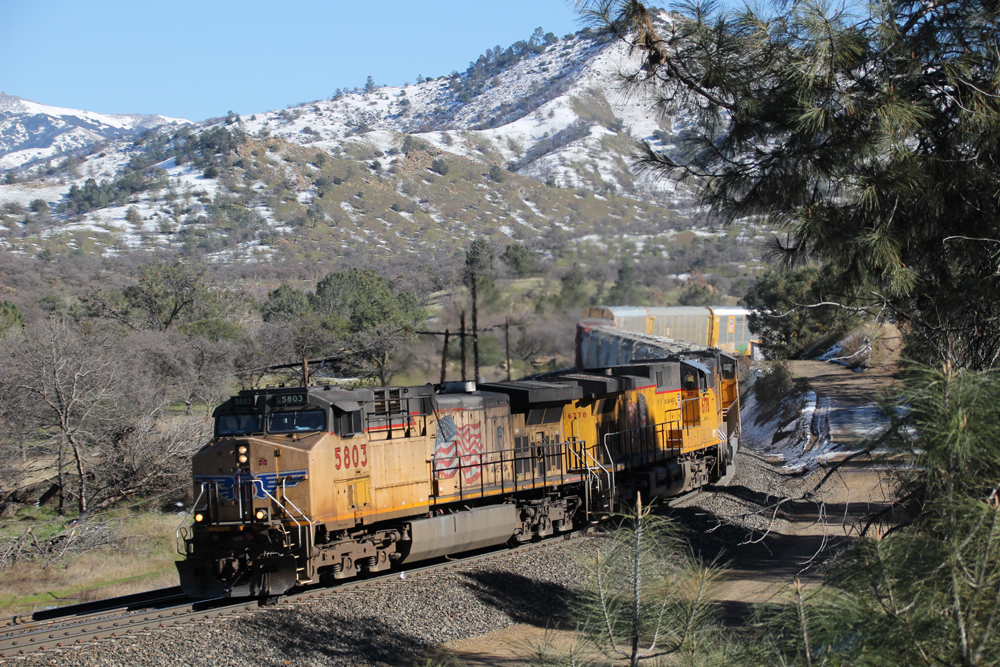




My curves are 18" and the engine will run on them well. I just can not seem to find anything to couple to the engine that it won't derail! Great sounds / runs good / looks good.
Very good locos, and heavy pullers. Unfortunatly these are not able to be programmes by LENZ 100 DIgital system. Best E7 allarround.